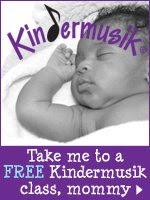 FACT SHEET
FACT SHEETResearch Encourages Focus on Music and the Arts to Enhance Early Childhood Development Music Research
The No Child Left Behind Act of 2002, states, "Studying music encourages self discipline and diligence traits that carry over into mathematics, science, foreign languages, civics and government, economics, arts, history and geography."
Research supports that music helps prepare the mind for specific disciplines of learning; skills learned through music carry over into study skills, communications skills, cognitive skills and abstract reasoning skills useful to all parts of life, according to a 1997 article in Neurological Research.
Young Children
Don Campbell, author of The Mozart Effect, traced neurological development during childhood and found prior to a major spurt of neural integration in the brain during the elementary school years, learning occurs through movement and quick emotional associations. For example, by age two, the brain has begun to fuse with the body via marching, dancing, and developing a sense of physical rhythm. The more that music children are exposed to before they enter school, the more deeply this stage of neural coding will assist them throughout their lives.
School-aged Children
Arts education makes a tremendous impact on the developmental growth of every child and has proven to help level the "learning field" across socio-economic boundaries, states the Involvement in the Arts and Success in Secondary School, James S. Catterall, The UCLA Imagination Project, Graduate School of Education & Information Studies, UCLA, Americans for the Arts Monograph, January 1998.
Arts education has a measurable impact on youth at risk in deterring delinquent behavior and truancy problems while also increasing overall academic performance among those youth engaged in after school and summer arts programs targeted toward delinquency prevention, according to the YouthARTS Development Project, 1996, U.S. Department of Justice, National Endowment for the Arts, and Americans for the Arts.
Community-based Arts
Findings from the Living the Arts through Language + Learning: A Report on Community-based Youth Organizations, Shirley Brice Heath, Stanford University and Carnegie Foundation For the Advancement of Teaching, Americans for the Arts Monograph, November 1998 reports that:
Young people who participate in the arts for at least three hours a day, three days a week for at least one year are:
~4 times more likely to be recognized for academic achievement.
~3 times more likely to be elected to class office within their schools.
~4 times more likely to participate in a math and science fair.
~3 times more likely to win an award for school attendance.
~4 times more likely to win an award for writing an essay or poem.
Young artists, as compared with their peers, are likely to:
~Read for pleasure nearly twice as often.
~Perform community service more than four times as often.
~Participate in youth groups nearly four times as frequently.
~Attend music, art, and dance classes nearly three times as frequently.
Findings from the Living the Arts through Language + Learning: A Report on Community-based Youth Organizations, Shirley Brice Heath, Stanford University and Carnegie Foundation For the Advancement of Teaching, Americans for the Arts Monograph, November 1998 reports that:
Young people who participate in the arts for at least three hours a day, three days a week for at least one year are:
~4 times more likely to be recognized for academic achievement.
~3 times more likely to be elected to class office within their schools.
~4 times more likely to participate in a math and science fair.
~3 times more likely to win an award for school attendance.
~4 times more likely to win an award for writing an essay or poem.
Young artists, as compared with their peers, are likely to:
~Read for pleasure nearly twice as often.
~Perform community service more than four times as often.
~Participate in youth groups nearly four times as frequently.
~Attend music, art, and dance classes nearly three times as frequently.








